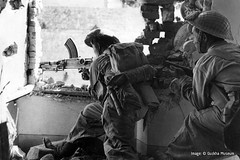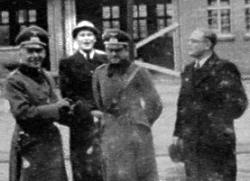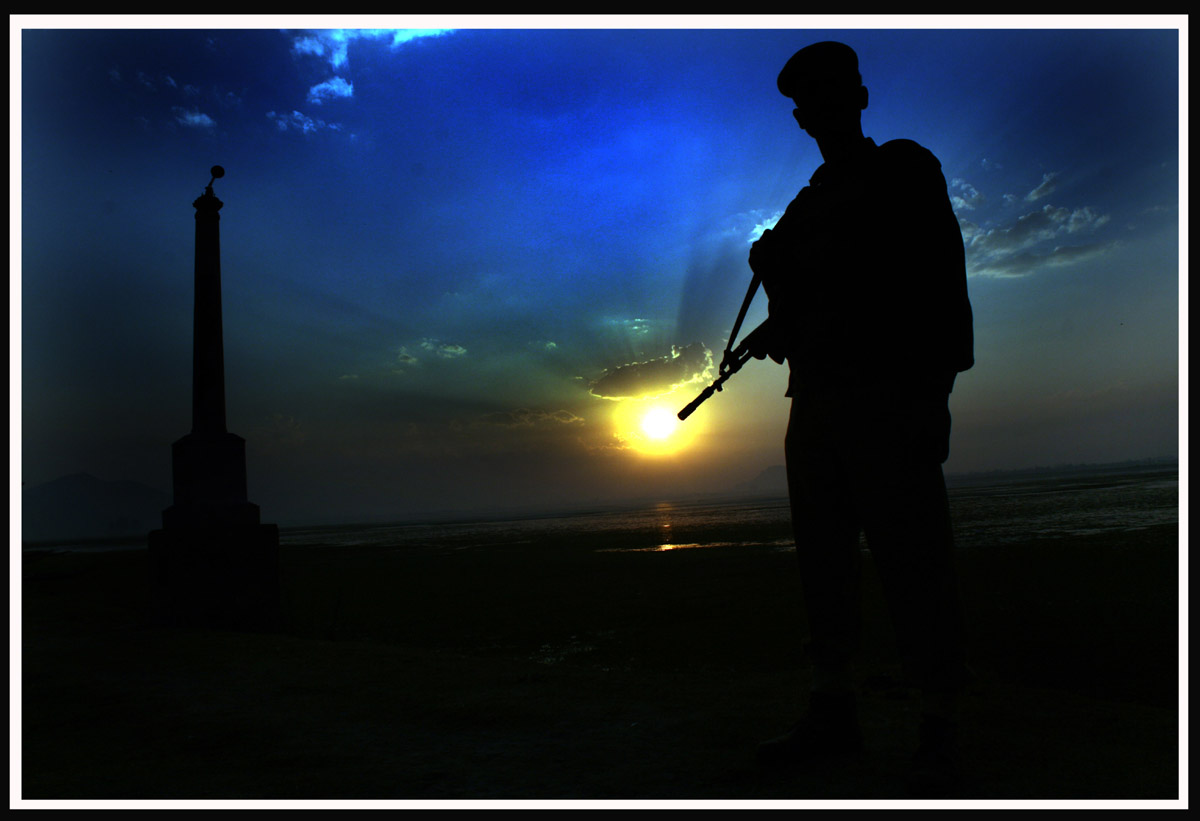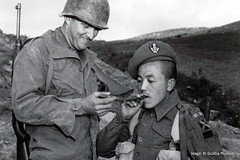Japanese-Germans??????In Wehermacht uniforms!!!
A Sikh Soldier of the Azad Hind Fauj (India )at a function in
Berlin - 1944

Soldiers of the 7th Gurkha Rifles in Italy

German Surrender --Signal Corps Photo Did you know????The last German unit to surrender was a weather observation group called 'Hauedegen' stationed on Spitzbergen after they send a request to their former contact station in Norway to get them out in July 1945, they were informed on August 21 1945 that a Norwegian seal-hunter would arrive in early September to rescue them. It arrived on September 4 and had to sign their own surrender treaty to the captain of the seal-hunter.
This is from India
RIP
 Armstrong makes his "one small step''
Armstrong makes his "one small step''

Astronaut Neil Armstrong, who took a giant leap for mankind when he became the first person to walk on the moon, has died at the age of 82, I remember as a kid of about 9 years, listening to VOA on the radio with my Dad when at midnight (IST) it was announced ''The Eagle has landed''. There was quite a commotion in the School the next day !! Bye Neil--be seeing you sometime.
And how did USA win the race to the Moon????
“Years of direct exposure to the Hitler regime, and its excesses, taught me a few unforgettable lessons and made me solidly opposed to any form of government which would deprive man of human dignity.” VON BRAUN

 Werhner Von Braun-------
Werhner Von Braun-------
 With Kennedy
With Kennedy 
Operation Paperclip Wernher von Braun was the leader of what has been called the "rocket team," which had developed the German V-2 ballistic missile in World War II. Attended institutes of technology in Berlin and Zurich and received doctorate in physics at the University of Berlin in 1934. Joined the rocket experimental center in Peenemunde in 1937 and was director of research until 1945; his work and that of his colleagues led to development of the V-1 and V-2 guided missiles used against the Allies during World War II. Surrendered to U.S. Army in 1945. Von Braun and some of his chief assistants--as part of a military operation called Project Paperclip--came to America and were installed at Fort Bliss in El Paso, Texas, to work on rocket development and use the V-2 for high altitude research. They used launch facilities at the nearby White Sands Proving Ground in New Mexico.After being moved to NASA, von Braun led his rocket team in the development - within only six years - of the monster Saturn I and Saturn V boosters, that took America to the moon.


STALAG LUFT-III
General Kumaramangalam , Indan Army, took over as General Officer Commanding-in-Chief, Eastern Command in May 1963. In Nov 1964 he was appointed Deputy Chief of the Army Staff and on 15 January 1965 he became Vice Chief of the Army Staff. General Kumaramangalam took over as the Chief of the Army Staff on 8 June 1966, the first Indian gunner officer and a paratrooper to reach this coveted appointment.He had his early education at Eton College and graduated from the Royal Military Academy, Woolwich in England.
Paramasiva Prabhakar Kumaramangalam was commissioned into the Regiment of Artillery in 1933. He was the second Indian Officer to be commissioned into the Regiment of Artillery, and was promoted to Lieutenant in 1935.
During World War II, he was awarded the Distinguished Service Order (DSO) as a Major for action in Libya on 27 May 1942. He was taken Prisoner of War (PoW) in Italy in 1942. He escaped; however he was captured again and imprisoned, this time in Germany, where he was
transferred to Stalag Luft III a high security camp for PoWs.
“Two hundred and fifty? You’re crazy. You should be locked up. You, too. Two hundred and fifty guys, just walking down the street?”
Hilts (Steve McQueen) berates Roger Bartlett (Richard Attenborough) and MacDonald (Gordon Jackson).
It is on record that the German Luftwaffe, who were responsible for Air Force prisoners of war, maintained a degree of professional respect for fellow flyers, and the general attitude of the camp security officers and guards should not be confused with the SS or Gestapo. The Luftwaffe treated the PoWs well, despite an erratic and inconsistent supply of food. Prisoners were handled quite fairly within the Geneva Convention, and the Kommandant, Oberst (Colonel) Friedrich-Wilhelm von Lindeiner-Wildau(left), was a professional and honourable soldier who won the respect of the senior prisoners. The Outcome Of The Great Escape Of the 76 men who escaped, 3 made it home to the UK. 23 were recaptured and sent back to Sagan. Hitler personally ordered the execution of the other 50 men. The commandant of Stalag Luft III, Lindeiner, was court-martialed by the Gestapo for not preventing the escape. Morale among the prisoners was low when the executions became common knowledge and few were keen to attempt further escape attempts. Although only 3 men managed to reach safety and 50 men were murdered, the escape caused havoc among the Germans. Thousands of police, Hitler Youth members and soldiers were diverted from wartime duties to search for the escapees. Urns containing the ashes of the 50 who were executed were brought to the camp. British airmen constructed the memorial (below) to commemorate their deaths. |

Little Jimmy Brown
Warsaw Ghetto Uprising, 1943
Shot in 1943, this is one of the best-known pictures of World War Two, as it depicts the terror inspired by the Nazis. The image shows the destruction of the Warsaw Ghetto, which was home to thousands of Jewish citizens escaping the Nazi regime. Though the most poignant part of picture is the frightened little boy in the foreground with his hands up as he is forcibly removed from his hiding place.









